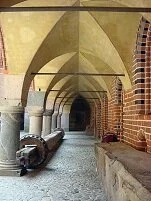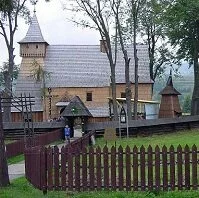Architecture of Poland
Poland has an incredible amount of preserved architecture and an enviable variety of styles throughout history, particularly given the region was never the birthplace of any architectural movement. Although many of the Romanesque (and other) structures were destroyed by the Tatars, Swedish, and later, Nazi and Soviet invaders, there are still a large number of these early buildings still standing.

Malbork Castle
The best examples of Romanesque architecture in Poland are found in Krakow and include St. Andrew's Church (1079-1098) and St. Wojciech's Church (1000s). Moving into the Gothic style, Krakow again is home to perhaps the country's best example in St. Mary's Basilica (1200-1300s), although St. Mary's Church in Gdansk (1300-1400s) can also stake a claim for that title. In fact, much of Gdansk was built in the Gothic style, however most of the city was destroyed during World War II so what is seen today is primarily rebuilt. The town of Kazimierz Dolny is another great example of a Medieval town as this small town, for the most part, survived the war intact. The final Gothic structure worth mentioning is Malbork Castle (built by the Teutonic Knights in 1200-1400s; restored in the 1950-1960s), which is the world's largest brick castle and in a style that reflects its Teutonic German past.

St. Michael the Archangel Church
Throughout Polish history, but peaking in the 1400s and 1500s, a large number of wooden churches were constructed in southern Poland, in the Tatras Mountains. Shockingly, many of these churches survive to the present. There are nearly 20 of these churches from the 1400s-1700s and they are generally found in mountain villages. One of the most impressive is St. Michael the Archangel Church (1400s), which is located in the tiny town of Debno (about 1,000 people).
Unlike much of northern Europe, Poland prospered during the Renaissance and the Zygmund Chapel (1519-1533) in Wawel Cathedral (Poland's Royal Castle and the kings' cathedral) in Krakow is often considered the best example of Renaissance art north of the Alps. During this same time, the royal castle of Wawel itself was restructured in the Renaissance style. Poznan's town hall was also constructed in the style as was the entire city of Zamosc, which was built as a defensive fortress by Italian architects.